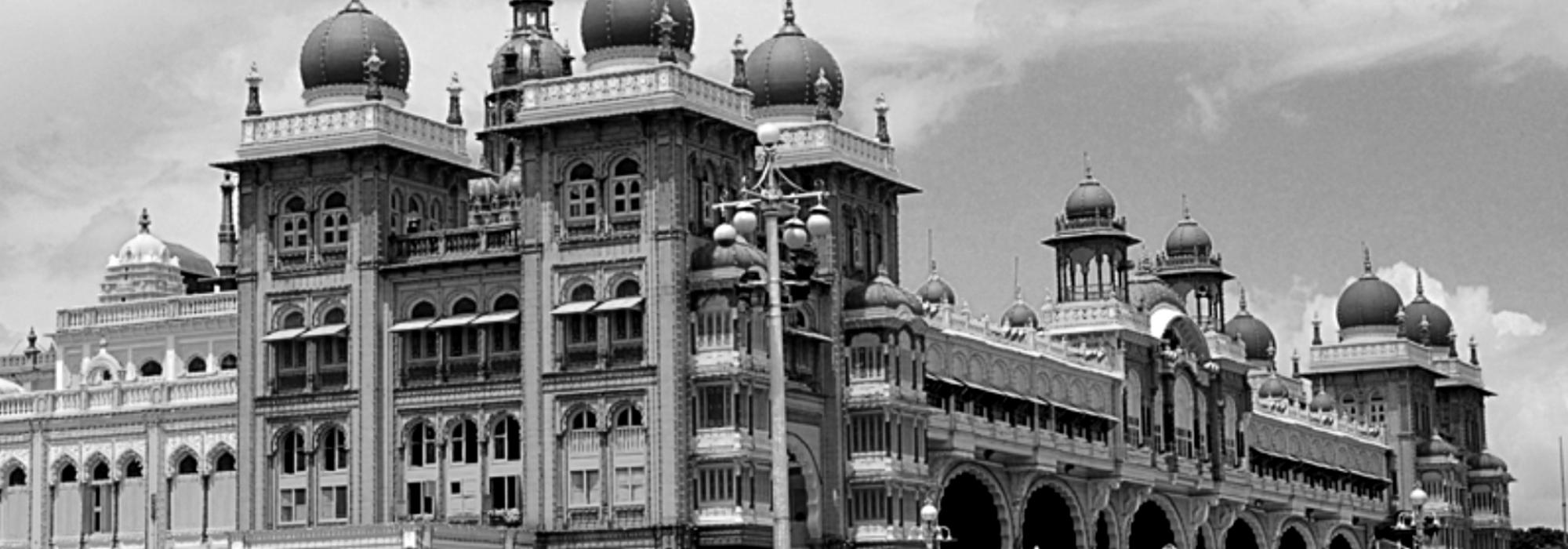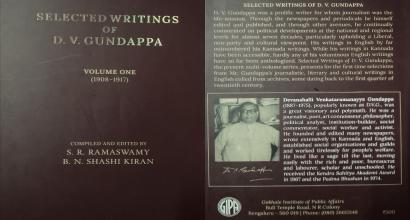The Beginning of Fragility
This idea is now crippled. A few people opine that the pride of the local officer (i.e., the officer in charge) was first pricked during the tenure of Sir Mirza Ismail. I can’t say that it was an absolutely baseless accusation. Citizens who deemed themselves prominent would call upon the Dewan at the drop of a hat, complain about the local officers, on occasion get the Government to roll out hukums without seeking the counsel of the local officers – such things began, little by little. One or two councillors, amaldars, and even the Deputy Commissioner, were ridiculed in public. This way, the hands of the amaldars began to weaken. The Deputy commissioners also became enervated.
After gaining complete independence in 1948 and with the ‘Responsible’ Government coming to power, I have heard and known about the state of administrative control and discipline in governance. I can’t offer any proofs or documents. In case the reports heard by the readers are in contrast with what I had heard and if they can establish their version, I will be ready to correct my opinion.
~
During the pre-Independence era, there used to be three positions of the State’s authority in Mysore – 1. The Mahārāja [king], 2. The British Resident, and 3. Public Services – a circle of officials who were drawing salaries, such as those employed through the Civil Services. Of these, the third category is familiar even to this day. We can recall a few details about the departments overseen by the Mahārāja and the British Resident.
The Mahārāja
The Mahārāja’s authority was merely in name. It was simply that of a rubber stamp, not real, and of no real value – holding such opinions is wrong. Such a view can be termed prejudiced and impertinent. When observed pragmatically, we can notice that all those who ruled from the throne made a tangible impact on the administration. Amongst them, Chamaraja Wodeyar X during the early days of gaining power was still in his childhood and Rangacharya [Dewan Rungacharlu] held the position of his guru; thirdly, the British resident used to be right beside. These were the reasons why we might have not noticed any significant interventions by Chamaraja Wodeyar during the early few years of his rule.
During the later days, the more aware Chamarajendra Wodeyar keenly supervised Dewan Seshadri Iyer’s style of administration.
I heard that after Him, Her Majesty Vanivilasa Sannidhana had quite a powerful influence on administration during her regency. I have even heard that Sir K Seshadri Iyer was unhappy with the queen’s excessive interference in the matters of the state. Whether or not it is true, Sir Seshadri Iyer never made any big decisions without the queen regent’s consent. The people from that period even used to say that her respect for him grew over time.
Krishnaraja Wodeyar IV, who came after her, was an ideal king who followed Constitutional Monarchy. He used to personally analyze each and every important concern. He used to closely note the comments and debates during the Citizen Representatives Assembly and Legislative Assembly with curiosity, and later deduce the direction people’s views. He would travel across the state and learn the public concerns and happenings interacting with the local representatives of people.[1]
The king had many such ways of knowing the people’s mindsets. Gaining enough knowledge through these means, he had developed the capability to value suggestions and directions. He would ruminate about the agreeability of the government’s decision and the extent of its benefits to people, make decisions in its regard, and instruct his ministers periodically. In certain instances, he would also stay the recommendations made by the government. The council of ministers would thus be extremely alert in fear of such stays. The council of ministers would always be anxious, wondering what criticisms at which meeting or what commentary on which newspaper had come to his notice that had caused dismay.
Krishnaraja Wodeyar IV can never be branded as a ruler only in name. Although he was someone who was part of an already established system and one who never defied his ministers, he was an influential ruler. That is exactly what a ‘Constitutional Monarchy’ means. The minister will be accountable for governance. But it is the job of the monarch to keep that minister alert and in control. This was the system prevalent in Mysore from 1881 to 1948.
Resident
A ‘Resident’ was a representative of the British Government. This sort of official never existed in Mysore prior to 1881. In other native provinces there used to be one such official appointed for a big kingdom or for a cluster of small provinces. A few people would go to the extent of labelling him a ‘Political Agent.’
Among the responsibilities of the Resident, three kinds were important –
1. Are the native rulers abiding by all the treaties, pacts, and regulations in a manner desirable? – making sure these are in order.
2. Is the ruler’s administration in agreement with his subjects? Is the king working for the progress of the province? – Supervising these aspects.
3. Is there any effort in the province which can inflict losses or pose dangers to the British? – Keeping an eye on this.
Reporting all the details concerning these three questions to the Viceroy (Governor General) periodically was the responsibility of the Resident. In the pretext of fulfilling his duty, it was not uncommon for the officer to pose autocratic questions to the king, display impertinence, or write a complaint to the Imperial Government. Occasionally, there were Residents who shared good camaraderie with the king and his officers. But Residents typically grumbled and threatened [the kings].
Connecting closely with such officers, it was not unusual for the locals to complain about trivial things and gain personal favours from them. There were snitches, even in Bangalore, who used to meet the Resident or his associate at least once every week without fail. Managing these trifles was an unspeakable embarrassment to the Dewans of Mysore.
The Brave Conduct of Visvesvaraya
It was during Visvesvaraya’s tenure that this difficulty came to an end and people could breathe freely. The petty-minded ones were not finding opportunities; the prestige and fame that Visvesvaraya commanded through his success all over began protecting him like a diamond armour. Neither Resident nor any other British officer took liberties with him. Everyone would conduct themselves out of their fear of him.
At the Durbars in the Mysore Palace, during birth anniversaries and Dusshera, there was a peculiar practice. While all the locals sat on the floor cross-legged and spoke [i.e., participated in the event], the Europeans alone would adorn the chairs. “If this is how it is going to be, you cannot come to the Durbar,” Visvesvarya told them clearly. In response the foreigners said, “We come wearing trousers, we are not used to wearing dhotras; uttarīyas are not part of our tradition. The only appropriate seating for us is a chair.”
Giving this some thought Visvesvaraya said, “Let there be a separate Durbar for the Europeans. During that event, the local people too shall be seated on chairs. The respect and dignity for both the locals and the foreigners should be the same. Our traditions must be followed only in an event purely attended by the locals.”
The king heartily agreed to this. On many such instances, Visvesvaraya curbed the arrogance of the foreigners. The Residents posted during his tenure were humbled by the intentions of this great man. The pettiness and malice of the British Residents ended there.
Until then the State’s raise and fall were at least faintly under the influence of the British Resident. The Dewans lacking in mettle would fear the Resident. And with personal glory and gain on their agenda, the Dewans were ever-ready to flatter the Resident.
The position of the Dewan was certainly not a bed of roses.
This is the second part of a two-part English translation of the first chapter of D V Gundappa’s Jnapakachitrashaale – Vol. 4 – Mysurina Diwanaru. Edited by Hari Ravikumar.
Footnote
[1] [Note by DVG]
When His Majesty was travelling near Chitradurga or Bababudangiri, he visited a temple on a mountain. While returning after paying his respects to the deity, he apparently read these lines written in black bold letters:
ರಾಜ ಬಾಲನಾಯಕ
ಮಂತ್ರಿ ಊಟನಾಯಕ
ಸಚಿವ ಸರದಾರನಾಯಕ
ರಾಜ್ಯ ಅನಾಯಕ
ನೀನೇ ನೋಡೋ ವಿನಾಯಕ!
[The king is a juvenile leader (nāyaka)
The minister is the leader of gluttony
The councillor is the leader of officers
The state is without a leader
Take a look yourself, O Vināyaka!]
In the history of England, a certain writer was apparently popularizing his writings under the pseudonym ‘Junius.’ Even to this day we haven’t come to know who he was. That is public spirit!









































